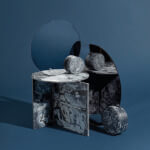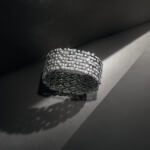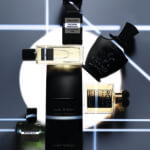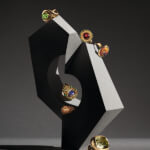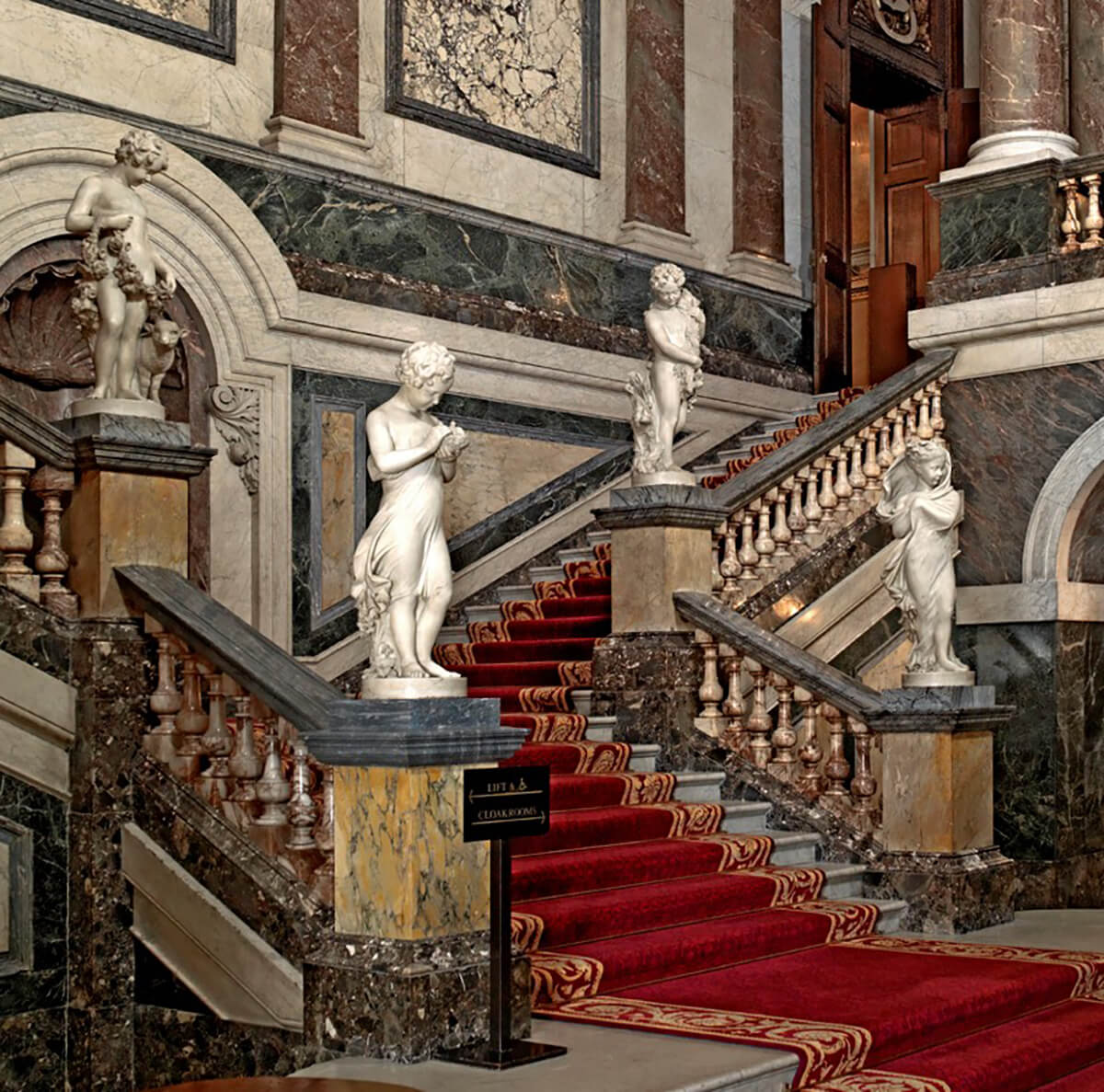
Blog
Goldsmiths’ Hall is an imposing Hanoverian-style mansion in St Paul’s in London, all sandy stone and stately flags flapping in the breeze. It is the third building on the same site to house the Goldsmiths’ Company, set up 700 years ago as a guild for British goldsmiths and silversmiths. It also hosts the annual Goldsmiths’ Fair where, for two intense weeks in September and October, 170 jewellers stop being craftspeople and become salespeople instead, leaving the safety of their workshops to cajole and entice potential buyers.
Earlier this week, on the opening day, I scaled the steep red-carpeted steps of the hall and joined the buzz of the mostly female visitors clustered around glass cabinets trying on rings and bracelets. The first thing that caught my eye was an enormous piece by Melanie Georgacopoulos, which she calls a necklace but I would call a shrug: made of pearls of varying sizes and blackened chains, it’s worn over the shoulders. Elbowing the slow coaches aside, I tried it on and pirouetted in front of the mirror. (A stern guard cracked a smile.) But then I checked the price: it was £27,000, very nearly £26,500 over my budget.
It’s not the sort of piece you’d expect to see at the fair, which has had a stuffy reputation as the place to go for grandmothers’ pearls and imposing formal silverware. This year, it is trying to reinvent itself by bringing in contemporary designers, as well as big names like the architect Zaha Hadid, who is choosing her 21 favourite pieces for a showcase.
One of the designers she has picked is Ute Decker, a German political economist-turned-journalist-turned-jeweller whose designs also show the fair’s change of pace. She makes avant-garde sculptural pieces that look like beautiful bendy coat hangers or swirling sculptures. “A lot of people ask me what this is,” she says twisting a slender piece of angular gold around her neck. “You can wear it in a million different ways.” She grew up in a winemaking family in rural Heidelberg, then found herself in London making jewellery as a hobby in her 30s. Many evening classes later, she made the leap to being a professional jeweller and has been producing her minimalist designs using Fairtrade gold for five years. (“In praise of shadows” earrings, pictured.) “I know the provenance of my gold, which comes from small mining communities in Peru and Colombia,” she says, emphatically. “It is our moral responsibility as makers.”
It’s a tricky transition for the fair. Many of the buyers are traditionalists who like the conservative approach, but there is a younger, more innovative audience who want change. The fair’s survival depends on attracting new buyers—the kind of people who get their art and antiques at Frieze and COLLECT, Masterpiece and LAPADA—without ditching the old. For now, that’s a recipe for eclecticism. The jewellery on display this year ranges from the talismanic shield rings of Hannah Martin to the delicate gold leaves of Beth Gilmour, but there are still more traditional designs, like diamond rings by Polly Wales. But whatever jewellers the fair brings in, the focus on craftsmanship will remain. “When we so regularly hear about the dearth of British manufacturing skills,” it’s director David Mills says, “the fair is a chance to support skilled craftsmen working in Britain and keeping alive a trade that’s been going for centuries.”
Written by Melanie Grant for Intelligent Life Magazine at The Economist 2014


